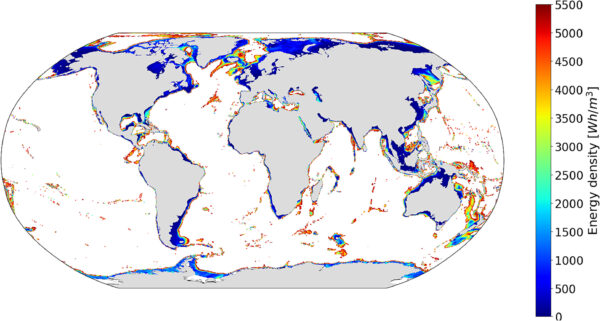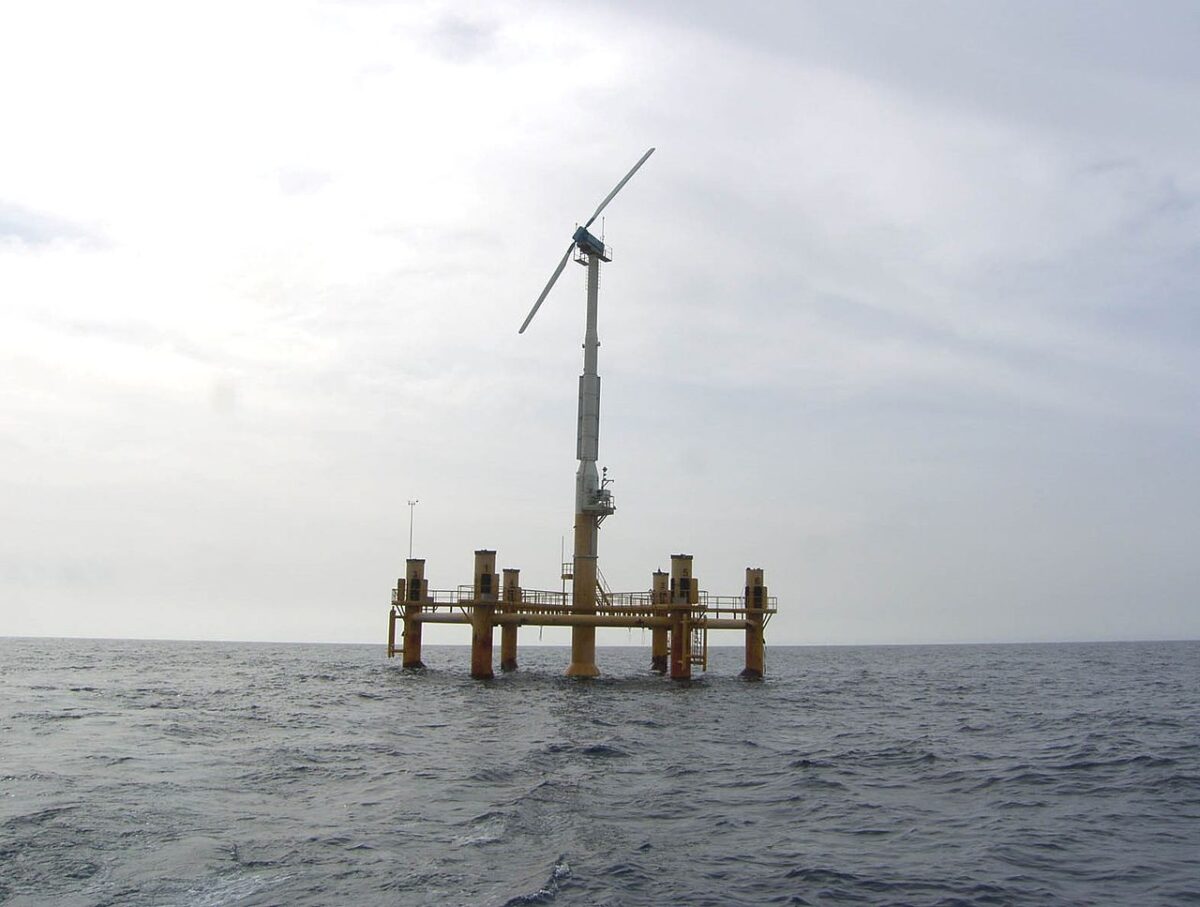Researchers at the Kitty Kiellands Hus University in Norway have suggested using the ocean space for setting up pumped-hydro stations for utility-scale storage at deepwater.
The new concept, dubbed subsea pumped hydro storage (SPHS), consists of utilizing ocean hydrostatic pressure to channel a flow of water into a rigid tank located on the seabed. This tank is initially filled with air and the pressure difference between the inside and outside of the tank is used to create a water flow into the tank.
“By opening valves connecting the ocean and the tank, water will start to flow into the tank thereby compressing the gas,” the scientists explained. “To charge the system, pumps will pump out the fluid in the tank causing the gas to expand and the pressure in the tank to decrease until it reaches the initial pressure.”
After going through the tank, the water is channeled via pumps through a Pelton turbine, which produces electrical energy that can be exported to the grid or the desired load.

Image: Kitty Kiellands Hus, Journal of Energy Storage, Creative Commons License CC BY 4.0
“To operate, the pumps require electrical energy which is supplied from an external source, such as local renewable sources or the grid,” the group said, noting that Pelton turbines are more suitable for the proposed SPHS concept, as they extract energy from the impulse of moving water, as opposed to water's dead weight like the traditional overshot water wheel. “From this point of view, a low flow rate is preferred as it would take longer for the tank to fill with a low flow rate compared to a high flow rate.”
The academics used non-dimensional analysis and empirical methods to evaluate the system's potential energy density, state of charge (SOC), and the efficiency of Pelton turbines under varying operating conditions. Their analysis excluded water depths exceeding 2,000 m, due to the high costs and complexity of ultra deepwater construction. “The suitability of a location of an SPHS system is decided by a combination of factors including, but not limited to, supply, demand, available or planned infrastructure,” they also explained.
The analysis showed that the system can potentially achieve an energy density 2600 Wh/m3 for a facility at 1000 m water depth.

Image: Kitty Kiellands Hus, Journal of Energy Storage, Creative Commons License CC BY 4.0
The novel concept was presented in the study “Harnessing ocean depths for energy: A theoretical framework for evaluating the feasibility of Subsea Pumped Hydro Storage,” publihsed in the Journal of Energy Storage.
“The results disclose globally suitable locations for an SPSH system in terms of energy density, emphasizing the necessity for additional research to thoroughly evaluate location-specific parameters for determining the economic feasibility of the concept,” said the researchers. “The analysis of Pelton turbine efficiency shows that high theoretical efficiencies can be achieved, especially when the degree of filling is limited to 90 %.”
This content is protected by copyright and may not be reused. If you want to cooperate with us and would like to reuse some of our content, please contact: editors@pv-magazine.com.




The question for me is whether economies of scale can be achieved, i.e. can the tank be made larger so that the ratio usable volume / volume of steel employed can tend to zero. (I suspect not… and that begs the question about economic feasability)
Seems like you could attach some kind of balloon to rigid anchors on the sea floor with pulley systems that would pull the balloon down when storing energy and release it to get that energy back through a motor generator. Like gravity storage but in the opposite direction. Then all of your expensive machinery can be above water with cheaper maintenance than sending dive crews down.
Very interesting – anyone out there that can help me understand how this would *ever* be economically feasible vis-a-vis battery technology? My concern is that the cost of SPHS, including OPEX required to empty tank, cannot offset that of battery technology. Appreciate any nuance or wild theories